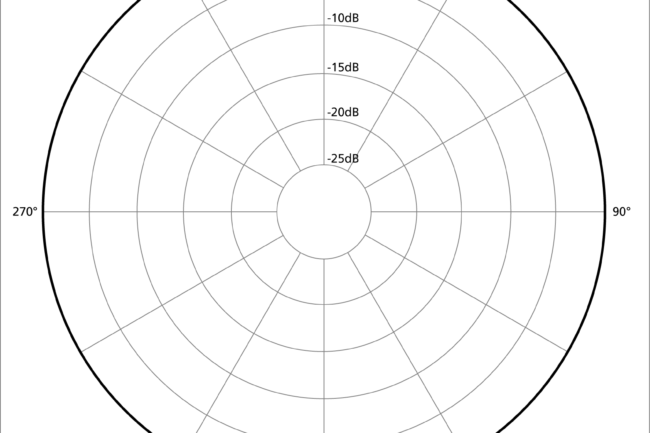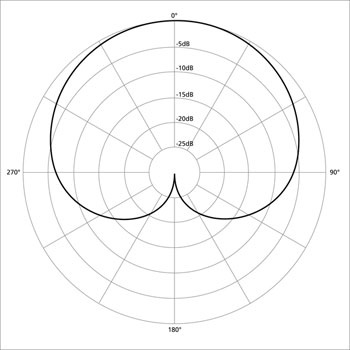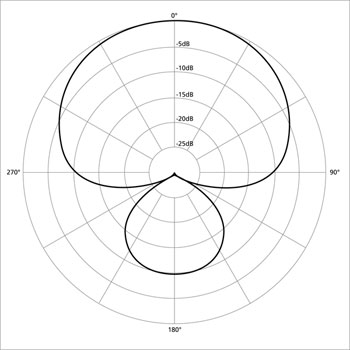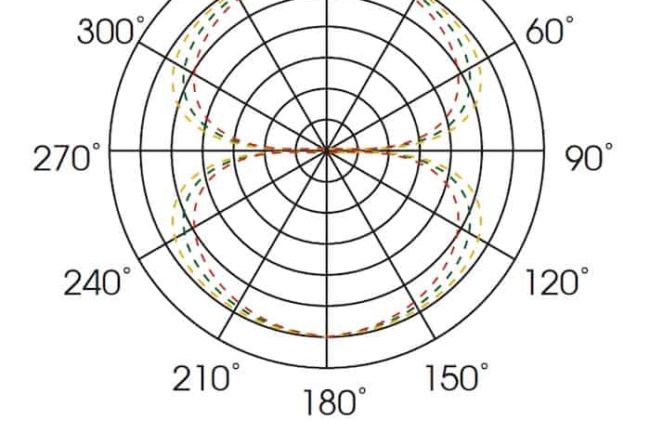Something that is often not thought of when recording source material for SFX is the polar pattern of the microphone. This is something that can have a pretty dramatic impact on not which direction the mic is most/least sensitive to, but also the tone of the recording.
People will often say “I’m only going to EQ it later, so why do I care about the tone?” and the answer is simple, the more appropriate the recording is at source the less that needs to be done in the editing stage and crucially will allow you to do MORE with it later down the line without showing up artefacts that would limit a “fixed” tone recording.
What are Microphone Polar Patterns?
A simple definition is : “The directionality of a microphone” – i.e. the sensitivity of the microphone to sound arriving from different angles.
There are three main types of polar patterns that you will come across regularly. There are more, but they are more extensions of these main ones.
Omnidirectional
 The simplest to understand is the omnidirectional polar pattern. This simply means that it is in theory equally sensitive all around the microphone. Omnidirectional microphones can be made using either a single capsule or a combination of 2 diaphragms using the pressure gradient principle.
The simplest to understand is the omnidirectional polar pattern. This simply means that it is in theory equally sensitive all around the microphone. Omnidirectional microphones can be made using either a single capsule or a combination of 2 diaphragms using the pressure gradient principle.
Omnidirectional microphones sound incredibly natural and are often favoured for their tone, but they have their drawbacks. Due to their nature, they will pick up sounds from all around the microphone which can lead to recording lots of unwanted artefacts. Recordings will also feature a lot more “room sound” so non-acoustically pleasing spaces will leave their mark on a sound if not recorded super close up, which would often remove the natural tone that you were using the microphone for in the first place.
Pros
- Natural tone
- No proximity effect
- Capture audio equally from all around the mic
- Resistant to plosives in vocals
Cons
- Offer no way to reject sound based on direction
- If used without shock-mounting are more likely to record handling sounds.
Cardioid

An example of a Cardioid Pattern
Perhaps the most common polar pattern is the Cardioid pattern. These microphones are most sensitive on-axis and reject sounds from the rear. Also they tend to be around 6dB less sensitive at 90° and 270°.
Their design is perfect for many applications including most live sound and targeted recording use cases. By rejecting sound from the rear a cardioid mic will have a far higher gain before feedback, making them perfect for live sound. This same characteristic is what makes them ideal for sound designers to capture sounds in the studio and in the field. They can be directed to the source of the sound to remove or reduce sounds in other directions and also eliminating handling sounds.
One drawback (or sometimes a positive) for cardioid microphones is how they enhance low frequency content at close range, this is known as the Proximity Effect. When performances can be controlled and repeated if problems arise this is manageable, but it is worth bearing in mind for situations that cannot be repeated and can result in some tricky corrective work, or even worse, unusable audio.
Supercardioid and Hypercardioid

An example of a Supercardioid pattern
Though in the same family as Cardioid patterns, supercardioid and hypercardioid differ by being “more directional”. This means that the angle that they are most sensitive is reduced. They will also have increased sensitivity to the rear of the microphone, though by no means will be as sensitive to the rear as an omni microphone is.
Pros
- Reject off-axis sound
Cons
- Proximity effect occurs (this can also be a pro)
- Sensitive to plosives in vocals
Figure of Eight
 Commonly found on multi-pattern condenser microphones like an AKG C414 or more traditionally on Ribbon mics. As the name suggests these mics patters make a defined 8 shaped pattern, equally sensitive to the front and rear of the microphone. The way the patter is achieved is by having two diaphragms back-to-back with the polarity of one inverted which creates null points where the mic is is not very sensitive to the sides.
Commonly found on multi-pattern condenser microphones like an AKG C414 or more traditionally on Ribbon mics. As the name suggests these mics patters make a defined 8 shaped pattern, equally sensitive to the front and rear of the microphone. The way the patter is achieved is by having two diaphragms back-to-back with the polarity of one inverted which creates null points where the mic is is not very sensitive to the sides.
Though the benefits of a Figure of Eight polar pattern aren’t obvious they are super useful and are well worth exploring. They can be used to add some room sound to a direct recording source while maintaining some control that you wouldn’t be able to achieve with an omni directional mic.
Perhaps my favourite use for a figure of eight mic is by using it together with a cardioid microphone to record in a Mid/Side arrangement. If this is something you haven’t tried before Universal Audio have a great article on the topic here.
